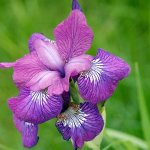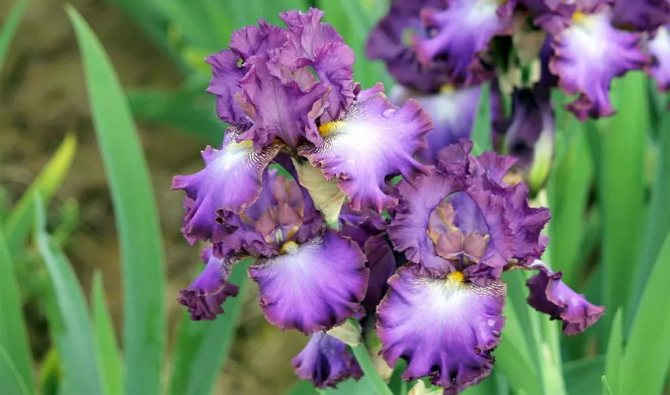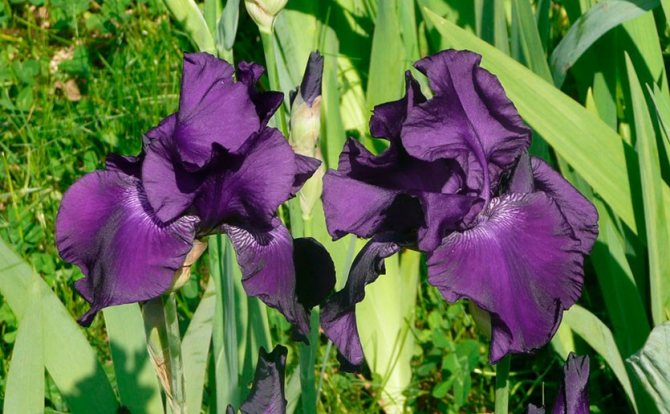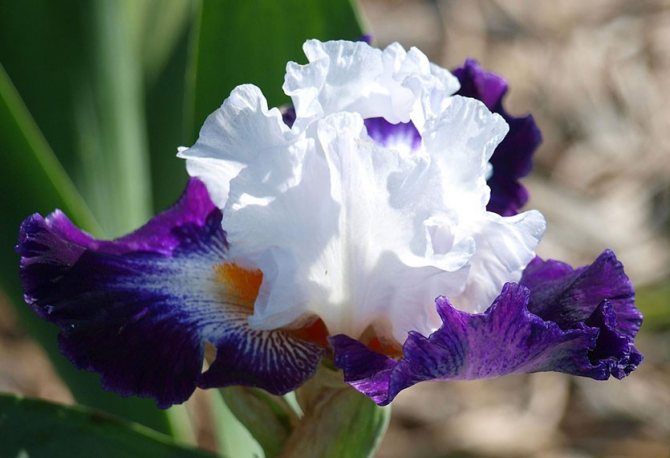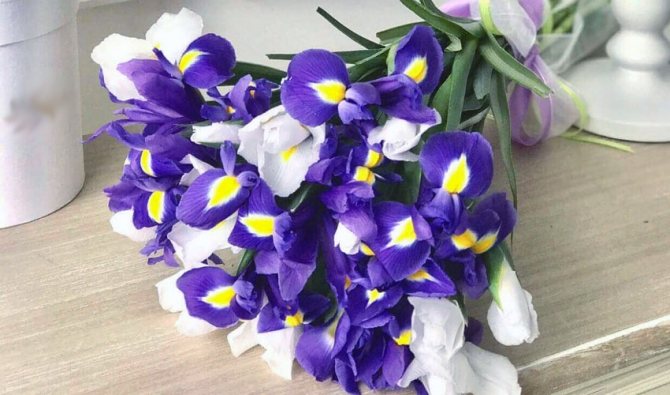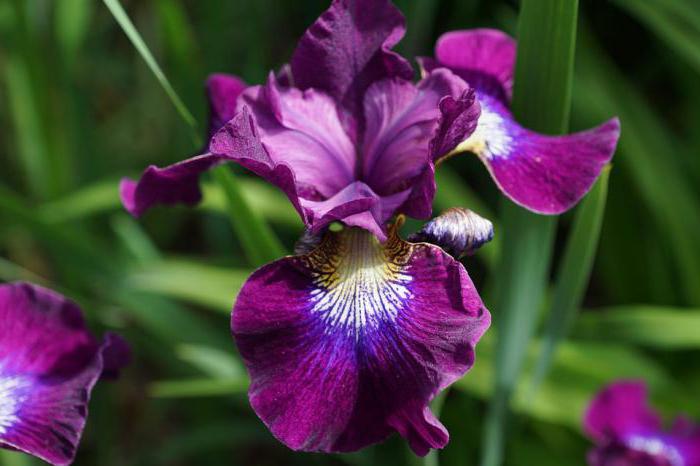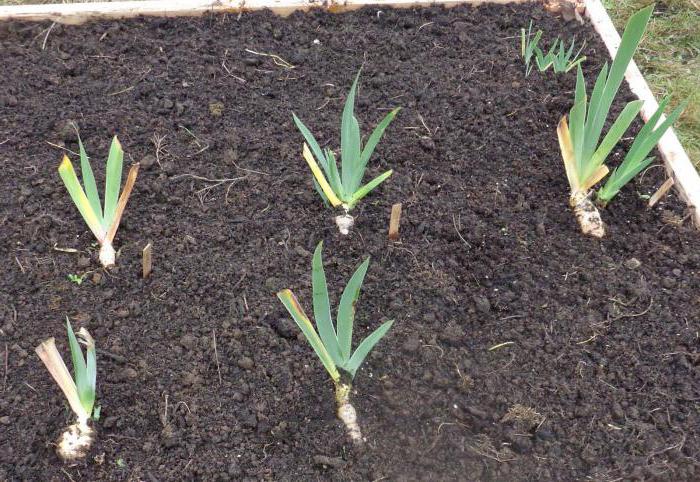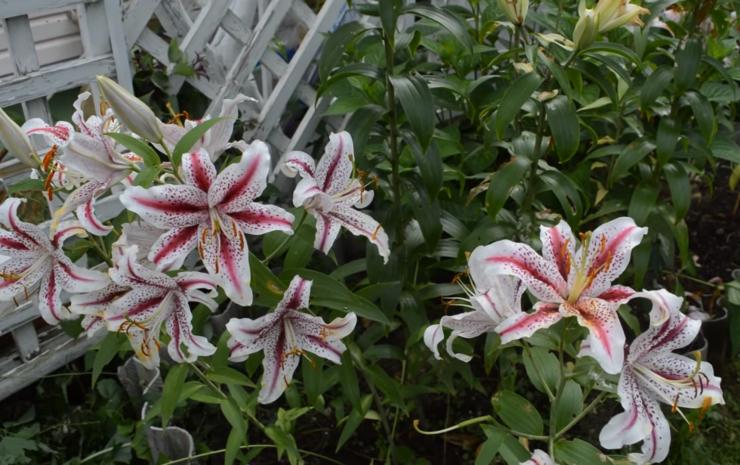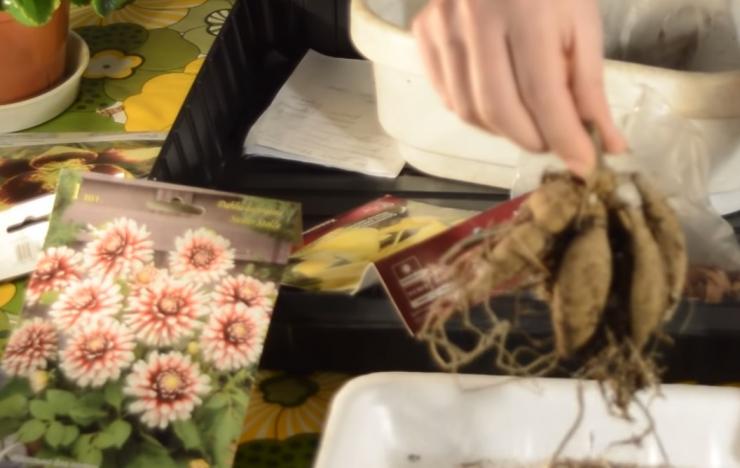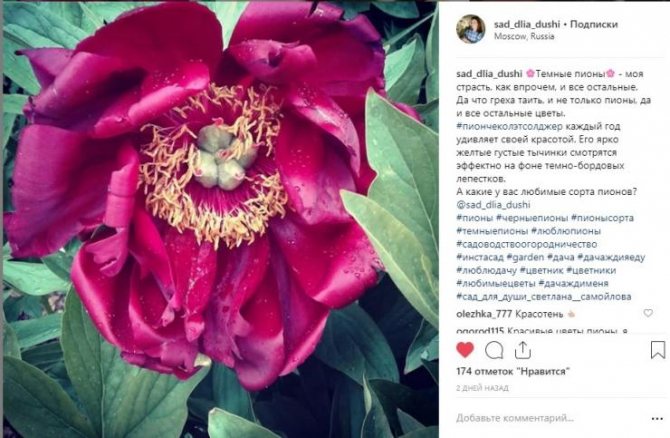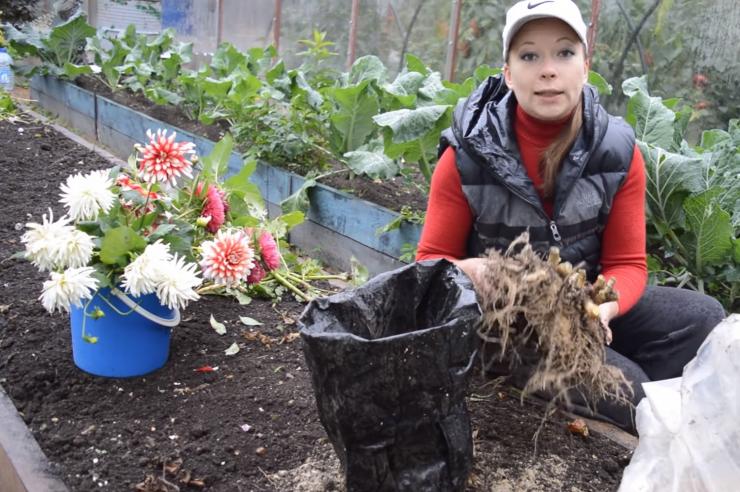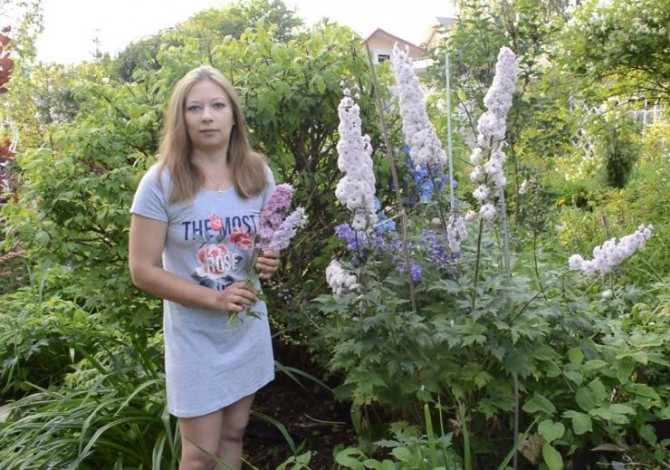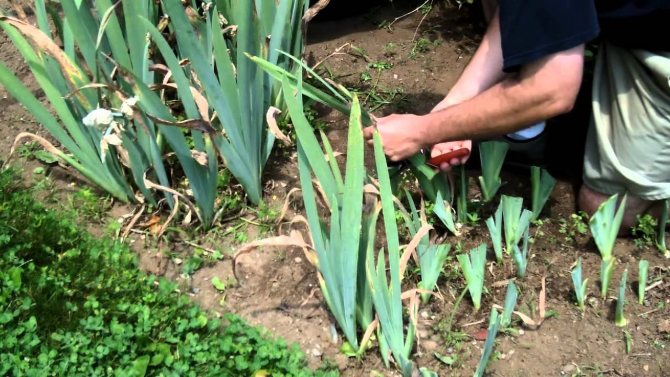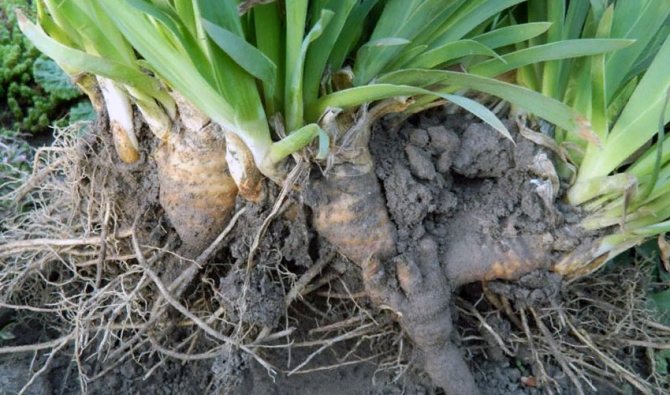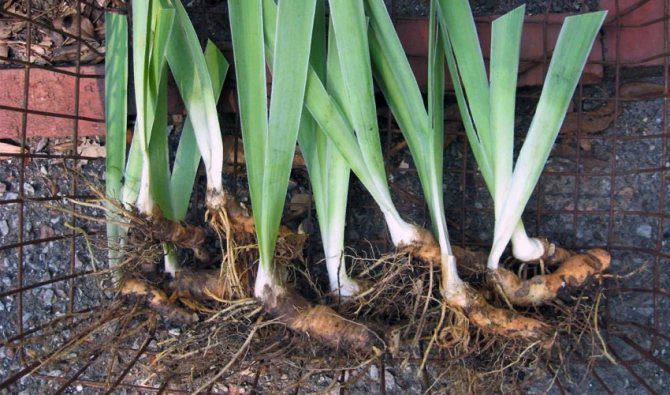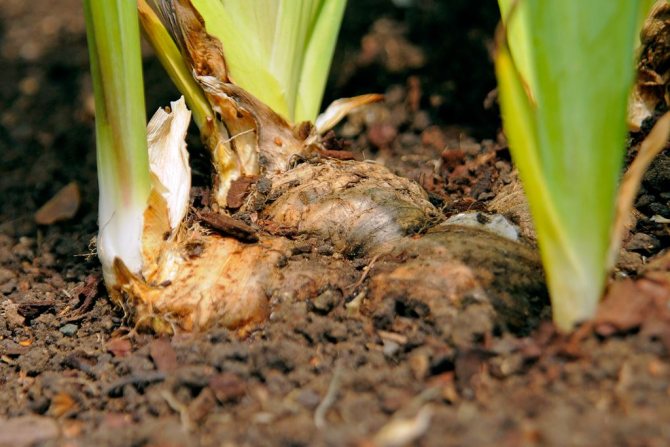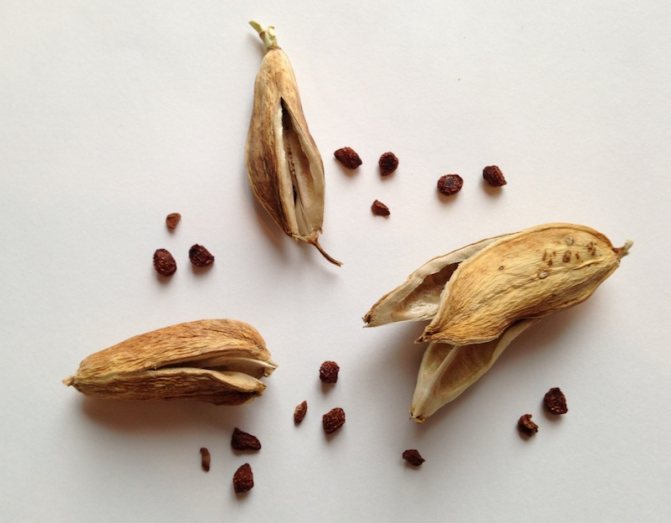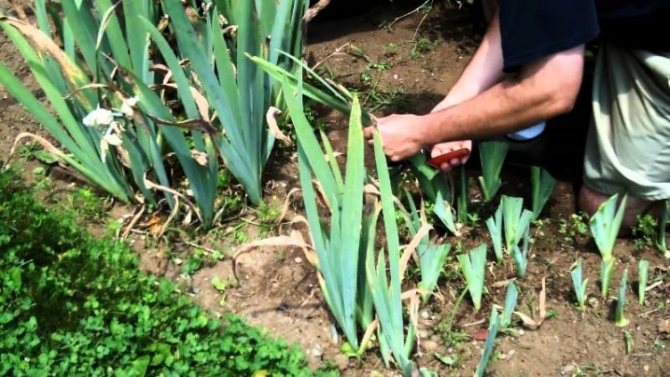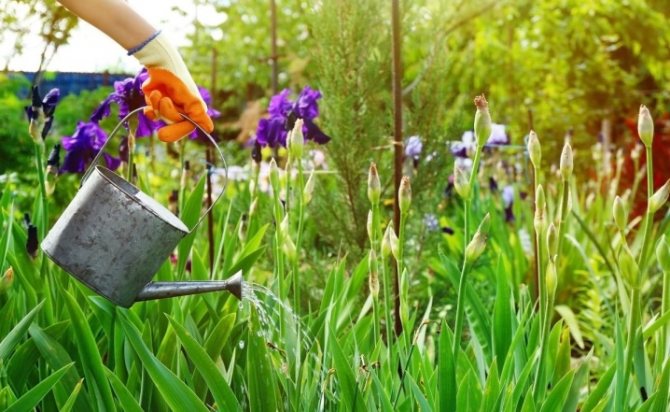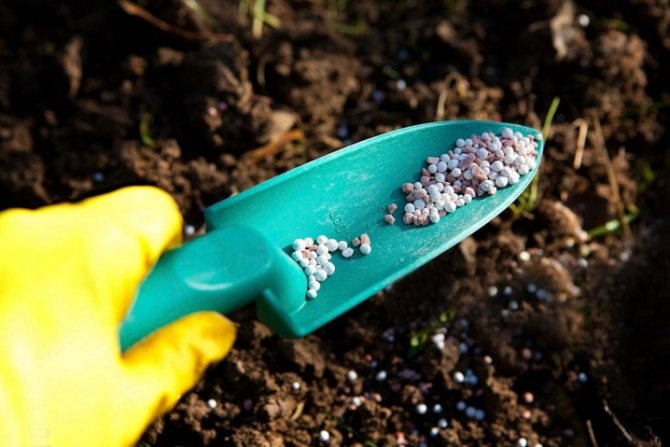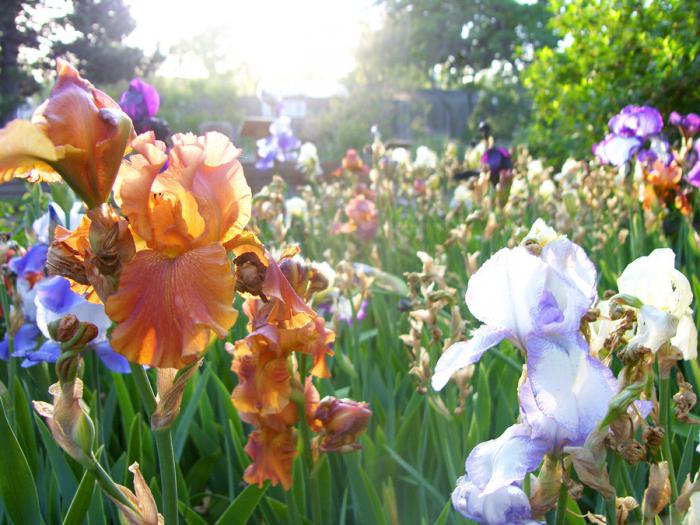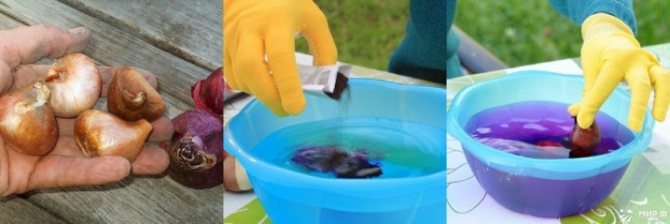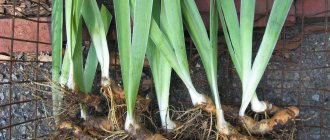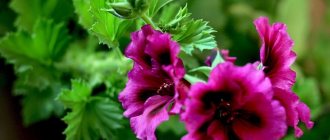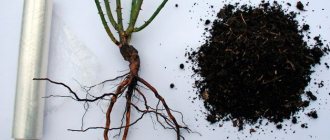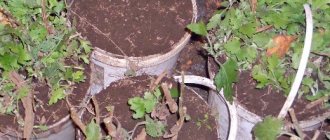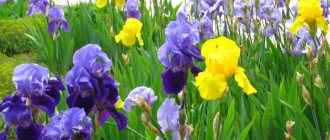9 March 2016
At the word - irises, unpretentious flowers from childhood - cockerels, which, due to their unpretentiousness, grew almost everywhere, immediately appear in the memory. Bright flowers with their roots go back to the distant past, and one of the ancient legends is dedicated to the goddess Iris, who voicing the will of the gods, descending to people on the earth along the rainbow. The word "iris" itself is translated from Greek - rainbow, and the multi-colored flowers owe their name to the famous Hippocrates, who named them so in honor of the ancient Greek goddess - the messenger of the gods of Olympus.
Today there are about 250 species of root irises and tens of thousands of varieties, among which are quite popular - bearded, dwarf, Japanese, blue. Perennial plants of the Iris family (Kasatikov) differ in a variety of shapes, shades, sizes and enjoy well-deserved love among lovers of gardens and vegetable gardens. Irises growing everywhere are famous for many names, among which are widely known: cockerel or pewt, killer whale or killer whale, magpie flowers, blueberry, and less common: pigtails, bells, wolf, hare or bear cucumbers.
Irises generously share their beautiful annual bloom from mid-May to the very end of July. Quite often, tall, bearded irises display a riot of colors next to multi-colored dwarf brethren on personal plots.
What irises to choose
We have already considered the classification of garden irises, recall that in Russia only rhizome species are officially considered to be real irises. Let's talk about them.
In total, several tens of thousands of different varieties of irises have been registered, among them there are varieties that can grow and bloom only in the southern regions of Russia, there are varieties that perfectly tolerate winters (with and without shelter) and are popular in the Central region.
In addition to winter hardiness, flower growers are guided in the choice of irises exclusively by their own taste, which color, shade and combination of colors they like best. But if you have a targeted cultivation of flowers - for cutting, garden design, well-thought-out schemes of flower beds and flower beds, the first thing you should pay attention to is the flowering time:
- early flowering - from late May to early June inclusive (low-growing varieties);
- average flowering period - from the beginning of June (medium-sized and tall varieties);
- late flowering: from the end of June (medium and tall);
- remontant irises: able to bloom again in late summer - early autumn (in Russia this is possible only in the southern regions).
When to buy?
I try to get phlox and irises as early as possible. By the end of spring, there will be no such variety of varieties. And it will be more difficult to find high-quality planting material in boxes with packages that are displayed on the shelves in sales areas.
Of course, it would be more convenient to buy bags in April and not think about how to keep them until the perennials are planted. But one can only dream about it. The chance is too great to be left without a purchase at all or to see a completely dried plant in a bag.
Many amateur flower growers believe that the best option is to buy a flowering plant in a container, as this not only guarantees quality, but also eliminates over-grading (in most cases).However, during the high season, it is not always possible to go for a container with a plant. In addition, it happens that a freshly transplanted plant appears in a flower pot, devoid of most of the root system. And prices are often overpriced.
And most importantly, for many people, the process of choosing and buying even just one colorful bag with a tiny piece of rhizome at the end of winter opens the long-awaited summer season. Pay attention to how interested people are in considering the planting material. They discuss varieties, consult with each other and share their gardening secrets.
Iris partners in the flower bed
Irises go well with conifers, lupins, peonies, phloxes (bristly, creeping), asters, monarda, lilies, primroses; from decorative greenery, chisel, heuchera, astilba are suitable.
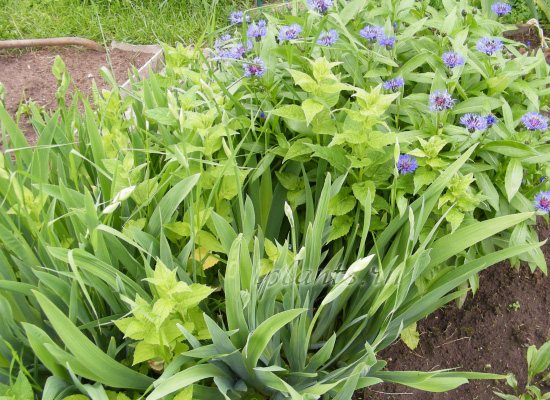
Irises and cornflower blue perennial
The complexity of any flower garden with the participation of irises lies in the fact that they have a thick rhizome, which is located horizontally and takes up enough space. In addition, irises need light and air in the area of \ u200b \ u200bthe roots, which means that tall plants with dense foliage cannot be planted in the neighborhood. Those. for any plantings and compositions between plants of various types, you need to leave enough free space and decorate it with any ground cover or stones.
In addition, irises quickly lose their decorative effect with the end of flowering. Unfortunately, from the high humidity of the air or soil (in a damp summer), from the violation of agricultural technology (mismatch of acidity), the leaves very quickly become stained, often of fungal origin. Therefore, it is usually practiced to trim the leaves of bearded irises, if they have lost their decorative effect, if they remain clean and green, nothing needs to be trimmed!
For cut, faded irises, you always want the flower bed not to look dull, but it is not always possible. Therefore, sometimes it is advisable to plant irises in flower beds in very small groups, so that when the flowering ends, the foliage is "lost" against the background of other flowering plants, or to plant irises in an iridarium (a flower bed consisting of flowers of one species - a mono flower).
Iridarium of irises is the most optimal planting option, you can arrange several groups by choosing irises according to varieties in color and height. It is only important not to thicken the planting, not to forget that the fans of the leaves need a certain amount of space.
Cutting flowers correctly
How to keep irises in a vase for as long as possible? First of all, you need to choose the right moment to collect them. This should be done in the absence of the sun: early in the morning or late in the evening. If the weather is cloudy but dry, you can cut irises during the day.
Flowers collected in the rain quickly darken and wither. This is facilitated by excess moisture that accumulates in the petals.
To store irises in a vase happened as long as possible, a number of conditions must be met:
- you need to cut only those flowers whose buds have a bright, uniform color;
- the cut of the stem should be located as close to the rhizome as possible;
- before being placed in a vase on the stems, the cut site is updated (it is made long, obliquely);
- boiled water is poured into a vase, with a temperature slightly higher than room temperature.
You can store irises in a vase for 10 days. If some flowers have begun to fade, they are removed from the general bouquet.
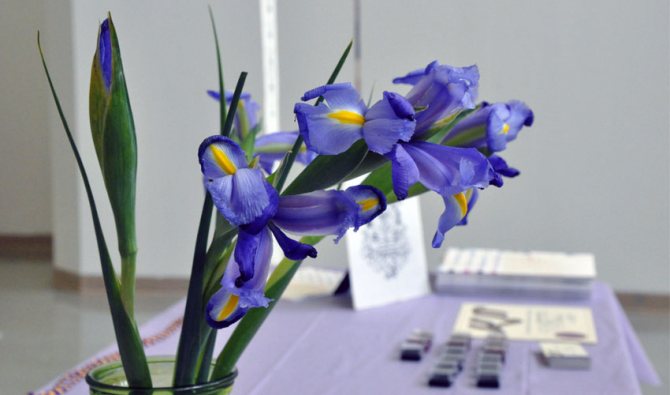

The soil
The mechanical composition of the soil: light loam, well-drained, with an acidity close to neutral pH 6.5-7.5.
If you have too heavy clay soil, which dries out for a long time after rains, it must be improved, otherwise the fleshy rhizomes of irises will quickly begin to rot. The porosity of clay soil can be increased by adding sand and peat.
If you have a wet area, near groundwater, then you need to plant irises only in raised flower beds, organized according to the same principle as vegetable beds - at least at a height of 20-25 cm.
On light sandy soils, irises will also be uncomfortable - in addition to the fact that they dry out quickly and are too poor in nutrients, they need to be improved by adding humus and loam.
It is categorically unacceptable to plant irises on the soil with the introduction of manure; the soil can only be ennobled with well-decomposed humus.
Description of the plant
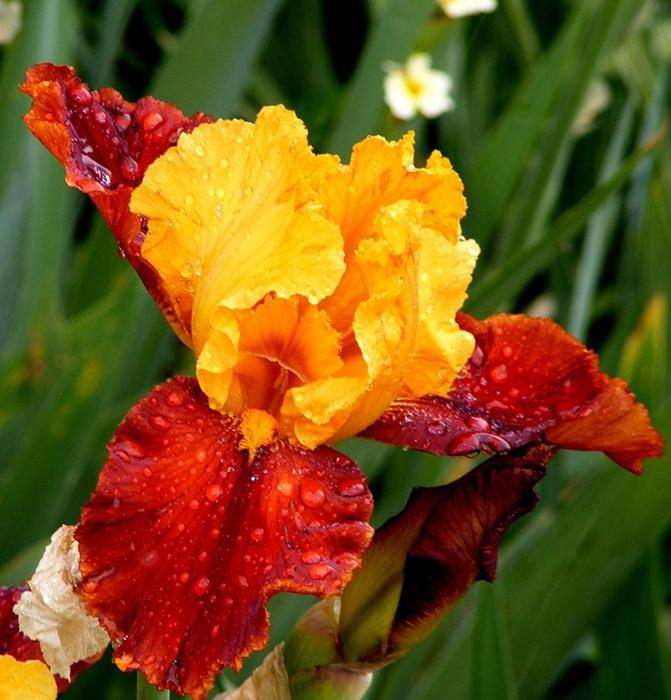

Irises are rhizome plants. The roots are cordlike, and the leaves are thin, with a slight waxy coating. They are collected at the base of the peduncle in small fan-shaped bunches. Iris flowers are very rarely found in inflorescences, most of them are solitary. They have a pleasant aroma, interesting shape and many shades of the rainbow. It is for this reason that the reproduction of irises is now very popular among gardeners. Nothing decorates a garden like bright, graceful and easy-care flowers.
Irises begin to bloom in May, most often end in July. However, with proper care, this time can be slightly extended.
Planting and breeding
It is best to plant bearded irises in August, so that the plants have time to take root in a new place before frost. If you haven't made it before mid-August, you can try planting in the spring.
As a planting material, we use cuttings from the rhizome of the mother plant, which needs to be transplanted.
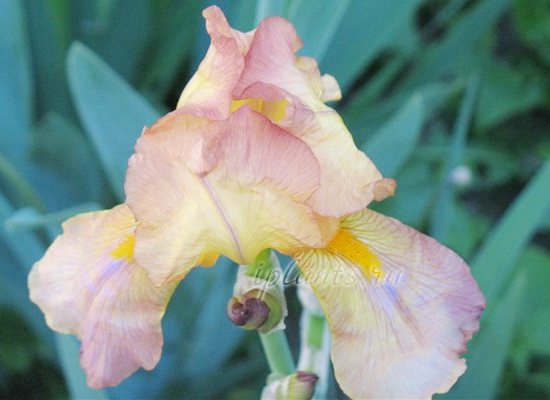

In one place, irises can grow for 6-7 years, then a transplant is required, although these periods also depend on the species. For example, Siberian irises can grow in one place for about 10 years, and Japanese, on the contrary, 2-3 years.
In general, the timeliness of planting and dividing iris bushes occurs for several reasons:
- Depletion of the soil, deterioration of its structure (compaction) and depletion of the composition - top dressing is only a temporary measure, they do not restore the humus layer.
- During the growth period, the rhizomes of plants actively "crawl" to the surface of the soil, this leads to the cessation of flowering, and with the onset of cold weather, mulching with peat can help as a temporary measure, but in general, when the rhizomes are already on the surface, a transplant is needed.
It is believed that the correct planting of bearded irises should be such that the iris tuber rises slightly from the ground, has the opportunity to warm up by the sun. To do this, you need to orient the plantings to the cardinal points so that the fan leaves do not cast a shadow on the rhizome while the sun is playing on the flower beds.
However, such a planting is not always feasible and is necessary if you are replanting a large bush to a new place - it must be planted at the same level as it grew before. If you are planting young plants, separated from the mother bush, it is important not to deepen the rhizome (this applies to all types of irises), especially on heavy soils, or low areas. It is enough to deepen the rhizome a little into the ground and lightly sprinkle it with soil. They themselves will eventually rise from the ground.
The distance between plantings depends on the height of the variety: low at a distance of about 25-40 cm, medium-sized 50-70 cm, high up to 80 cm.
From personal experience (Elena Kutsulova): “We have a light peaty soil, we improve it by adding humus and sand, loam is simply not available. So bearded men bloom very well every year, they are almost not affected by diseases. But when planting, they have to be deepened a little, contrary to the rules. If you plant a rhizome on the surface, the plants are very unstable, even undersized varieties need to be tied up - the earth is loose, does not hold well, and the garters spoil the whole look of the flower bed. Without garters, the wind flutters, I would like the site to be less blown, but what we got, we are waiting for the fruit trees to grow.Our peat soil always lacks moisture, after rain the earth instantly dries up, so be guided by the planting depth by the type of soil - on light sandy and peaty soils, add iris rhizomes to a depth of no more than 1-2 cm. "
You need to know that the formation of a flower bud in bearded irises does not occur immediately, it takes about three years. Therefore, after planting young plants, when the bush has no more than 3-5 leaves, the flowering is weak - no more than one or two flower arrows. For high-quality flowering, you need to have at least 7-9 leaves in one fan.
Transplant and division technique
You need to dig out the irises with a pitchfork, widely grasping the soil around the bush.
Shake off the ground, and divide the rhizome into pieces, so that each has 2-3 links of annual growth, i.e. 2-3 growth buds, a few leaves and a small part of the roots.
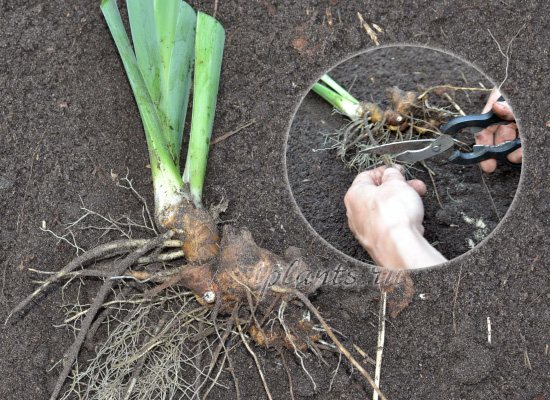

In order for the cuttings to take root faster, you need to cut off the leaves, leaving the green part about 10-12 cm, or cut it by 2/3 of the length by eye. If the roots on the separated rhizome are strong, then in order to balance the aboveground and underground parts, they also need to be shortened by about 1/3 of the length. If the roots are small, you do not need to cut anything.
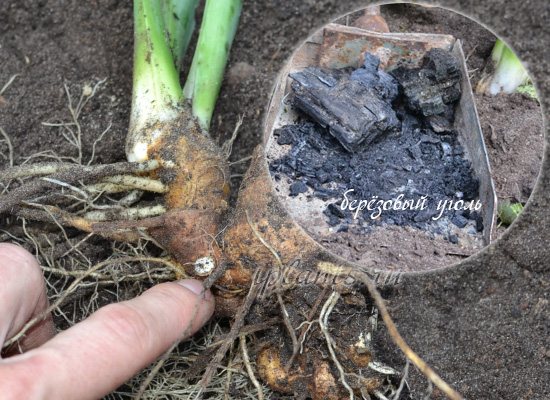

Now the rhizomes need to be dried for several hours, and if the soil is very damp, for example, in rainy weather, it needs to be dried for 1-2 days. In any case, all cuts of the rhizome and the edge of the trimmed leaves must be powdered with colloidal sulfur or crushed coal to protect them from decay.
The dimensions of the holes to be dug in the new flower bed must correspond to the dimensions of the rhizome and roots, since we will not deepen the planting.


In the future, planting irises is no different from, say, planting bulbs, for example, lilies or other flowers with a thick fleshy rhizome: pour sand on the bottom of the dug hole, straighten the roots and sprinkle it with earth.
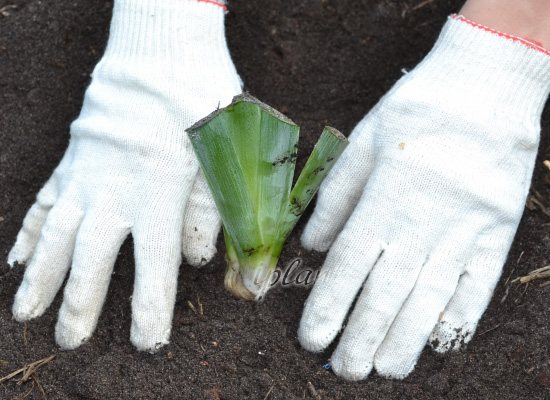

We try to place the upper part of the rhizome exactly at ground level.
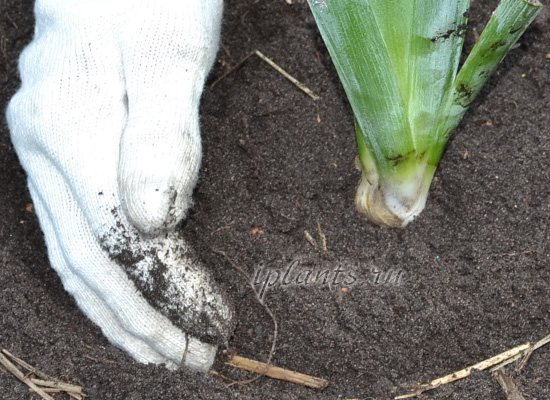

We lightly compact the earth with our palms, at a distance of about 20 cm around the plant or group we make a side of the earth and water it if the earth is very dry.
If you are buying iris planting material on the market, try to choose healthy plants:
- the rhizome is firm, elastic to the touch, without mold and stains
- the roots are juicy, not dry in a thread, alive
- cut leaf stalks green
Brown spots on the leaves are permissible - this is treated with available fungicides, but a strong yellowing of the bases of the leaves may indicate imminent death, such layers may not take root or survive the winter.
By the way, if after dividing from the old mother bush parts of the rhizome remain without leaves and roots, but quite healthy in appearance, without damage, do not throw it away - dig it somewhere in a temporary flower bed, next season its dormant buds will wake up, grow back roots and you will receive additional planting material, although perhaps weaker.
Iris rhizome storage
If you bought rhizomes of bearded irises in late autumn, or ordered by mail from an online store, then they can be saved and planted in the ground in spring.
The rhizomes are stored in a cool place at temperatures from 0 to +4 degrees for several months.
For storage, it is better to use food paper bags (from flour) and semi-dry sphagnum moss. You can simply wrap it in several layers of newspaper and fold it into a box. To prevent the rhizomes from damp and rot, they do not need to be wrapped in a bag - storage only in a dry state.
Growth stages
Irises grow rapidly; in one season, several stages of their development pass. Let's consider them using the example of flowers that were planted in open ground in spring. It is during this time of the year that the initial stages of growth occur. When to plant irises outdoors in spring? This is done in April or May, since the soil has time to warm up and the plant is not threatened with hypothermia.
First, the growth of the aerial part occurs. In just 40 or 50 days, the plant has a bush and flower stalks, on which the buds are located. In order for irises to grow beautiful and healthy, they need a strong root system. That is why, during spring planting, the underground part develops first, and after that, towards the end of this season, flowering begins. How to plant irises in spring? This must be done carefully so as not to damage the fragile bulb of the plant or its fragile root system.
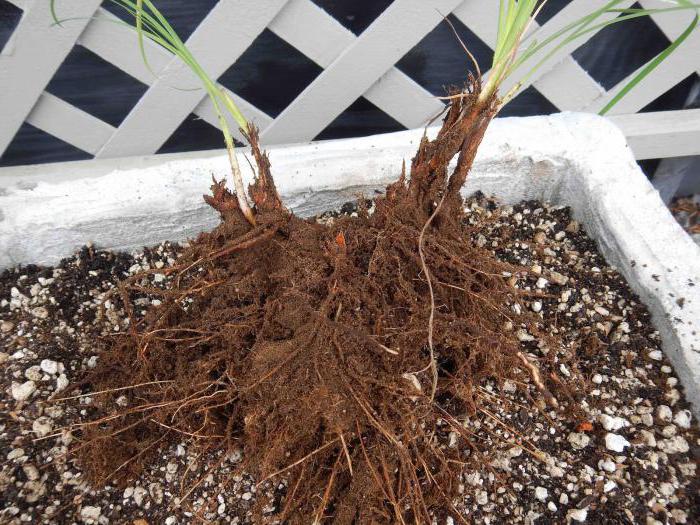

When flowering ends in July, new links grow on the roots. Subsequently, kidneys appear on them. In the summer, a plant is transplanted. It is carried out at a time when there are no buds on the regrown root. They are very fragile and easily damaged during transplantation.
In autumn, from the end of August to October, you can plant irises in the open ground. At this time of the year, the root system of the plant is quite developed, the buds are already strong and lignified, they can be easily distinguished. Irises have time to take root before the onset of the first frost. They tolerate winter well and start growing in early spring. In one season, a bush grows from a small sapling of irises. He is ready to breed next year.
Iris care
These flowers delight with their unpretentiousness. There is no need to dance with tambourines over them - they take root well during transplantation, they easily endure any weather, except for prolonged rains.
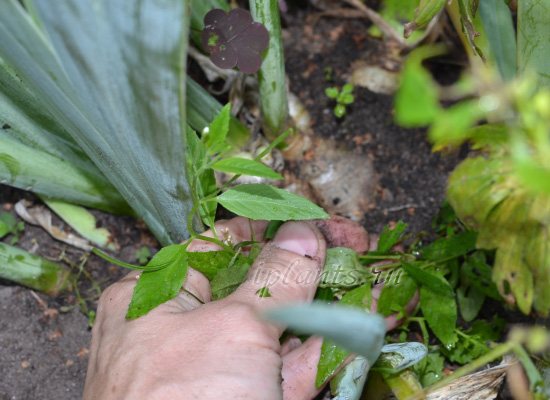

All care is as follows:
- tying tall varieties to a support
- watering in dry hot weather only during the formation of buds and flowering, about once a week, if it is abnormally hot and dry - twice, if it rains periodically iris does not need watering
- timely fertilizing with fertilizers
- spraying against diseases and pests twice - before flowering and at the end of flowering, the leaves remain green, pruning is not required
- if, nevertheless, the leaves are covered with spots, shorten them, leaving 12-15 cm
- shelter for the winter of heat-loving varieties or in regions with harsh winters
Top dressing
Two or three additional dressings per summer season are enough for Irises.
- first - in the spring at the beginning of regrowth
- the second - at the beginning of bud formation
- third - two weeks after flowering
If the soil in the beds is well prepared before planting, the first top dressing can be skipped. But in the second or third year after planting, it is desirable. You can apply the following recipe: 20-30 g of ammonium sulfate or ammonium nitrate and 20-30 g of potassium chloride per 10 liters of water - this solution is per 1 sq. m. of soil. You can carry out the first top dressing with a solution of humus - not mullein or manure, namely humus (manure that has lain for three years) diluted with water in a ratio of 1: 5, add a handful of ash and water with this solution.
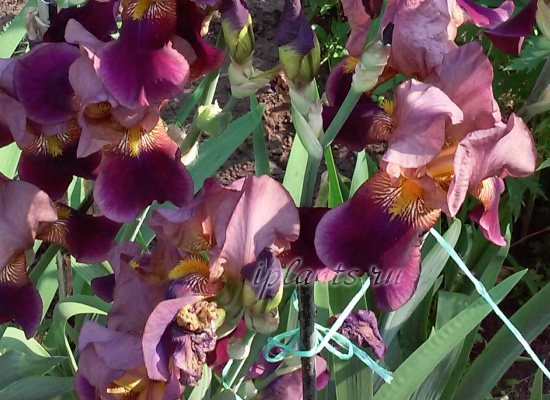

The second and third top dressing should contain a minimum of nitrogen, you can use a complex ready-made fertilizer for flowers, for example, Fertika-lux, Agricola, Greenworld-floral, Zdraven aqua for garden flowers and others.
It is important that the second feeding contains more potassium, the third one contains more phosphorus. Top dressing should be applied only on wet soil, but traditional loosening is not needed. Irises practically do not need loosening at all - you can damage the roots. You just need to remove the weeds in a timely manner.
If you missed the last feeding, it is better and do not try to do it later than mid-July, untimely fertilization is more harmful than underfeeding. Excess nitrogen is especially dangerous.
Shelter of irises for the winter
Shelter is required only for thermophilic varieties, for example, American selection, as well as for young bushes planted this summer. We cover them with straw, spruce branches and non-woven material. If the soil is light, sandy, mulch the irises before wintering with peat.
You need to cover the plants after the soil dries well after rains, you can after the first frost before snowfall.Before hiding in mid-October - early November, be sure to cut off the leaves, leaving about 10 cm from the ground.
In the spring, you need to remove the shelter on time so that the plants do not vomit, it is imperative to rake the peat if poured.
Water requirements
Without water, cut iris will dry out very quickly, and excess moisture will lead to mold and plant rot. Therefore, not too much water is poured into the vase.
There are additives that help prolong the freshness of cut flowers. These include:
- citric acid (3 - 4 g per 1 liter of water);
- granulated sugar (2 tablespoons per 1 liter of water);
- hydroxyquinoline sulfate (a substance that protects against plant diseases).
To prevent decay of the stems, put in a vase:
- copper wire;
- silver item;
- charcoal (small piece).
Diseases and pests
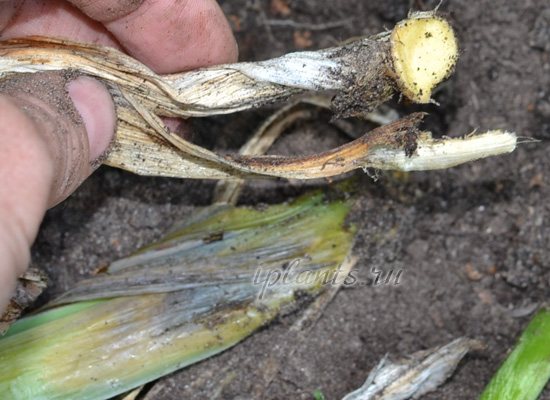

Irises most of all suffer from rot caused by improper planting, too heavy moisture-absorbing soil or prolonged dampness, rains. To avoid this, plant irises only in raised beds, do not plant the tubers too tightly and plant in a timely manner. Water only as needed - during budding and flowering, and with the end of flowering, there is enough rainfall and dew. If rot has already appeared, you need to water the soil in the flower beds with a 0.2% solution of foundationol.
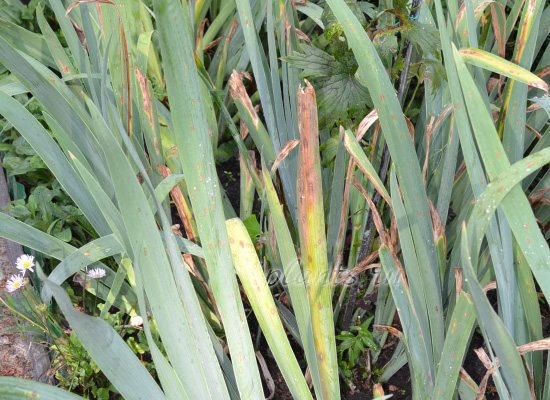

From high air humidity, often on the leaves, especially after flowering, spots of a fungal nature appear - leaf spot. Therefore, immediately after flowering, you can spray on the leaves with solutions of fungicides (for example, copper oxychloride), cut off the affected leaves.
Of the pests, irises are most threatened by the bear, slugs and thrips.
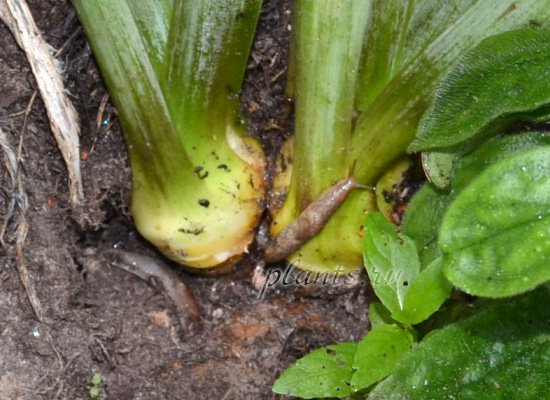

It is easiest to fight against slugs by laying out traps - put wet rags between the bushes, collect slugs from them early in the morning and destroy them. Spraying with insecticides (karbofos, decis, aktara, confidor, etc.) helps from thrips - spraying must be carried out before flowering, even at the stage of bud formation.
Wintering
A frost-resistant plant does not require reinforced shelter for the winter period. Usually, iris easily tolerates the cold even in a snowless winter, if you cover the rhizome with earth, throw foliage on top, spruce branches.
Bulbous varieties are dug up in the fall, when the leaves dry up. The bulbs are carefully dried, stored in a cold, dry room (on the balcony, loggia). They are put in a box for storage, shifting with paper, peat.
Varieties of bearded irises, which do not tolerate severe frosts, are stored until spring, replanting the dug out rhizome shallowly into a pot. The containers are stored in the basement, refrigerator, observing the temperature regime not higher than + 5 ° С.

